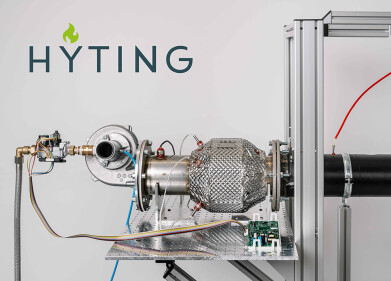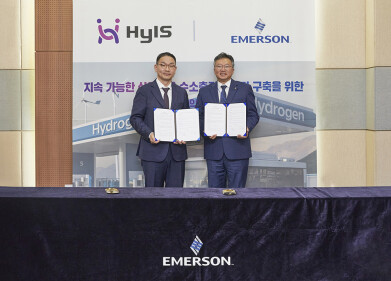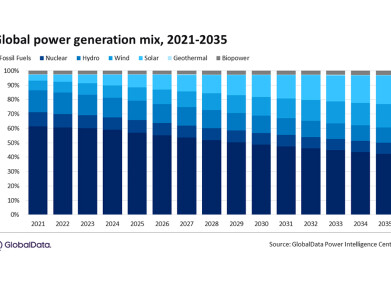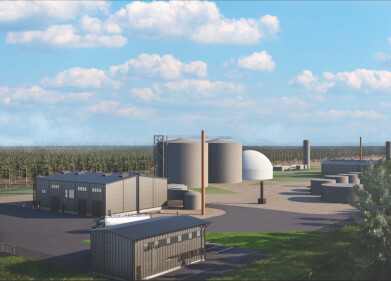-
 Landia's externally mounted GasMix AD digester mixing system
Landia's externally mounted GasMix AD digester mixing system -
 Landia GasMix
Landia GasMix -
 Alastair James Ward (right) speaking at UK AD & Biogas
Alastair James Ward (right) speaking at UK AD & Biogas
Green Energy
University Study Reveals More Methane and Major Energy Savings for AD Operators With Digester Mixing System
Jul 16 2015
The University of Aarhus has revealed important findings from an extensive study into the performance of Landia’s externally-mounted GasMix system, showing that it increases methane production by almost 11% in a digester treating agricultural residues.
The study also showed that viscosity was decreased by more than 31% when Landia’s GasMix was used in a heat exchange tank treating agricultural residues prior to anaerobic digestion. This greatly reduced viscosity input from the heat exchange tank allowed for a 12.5% reduction in downstream reactor mixing times, equivalent to a saving of 210 kWh per day in electrical consumption.
Conducted partly at the Madsen Bioenergi plant in Skive, which every day treats approximately 285 tonnes of cattle/pig slurry, deep litter manure and maize silage, the Study also looked at the LBT Agro biogas plant near Hjørring – as well as the Energi Viborg Spildevand A/S wastewater treatment plant near Viborg (all three plants are in Jutland, Denmark).
Steen Buhl Larsen, Landia’s Managing Director, commented: “Our GasMix customers have repeatedly informed us of significant increases in their site’s gas yields – and now we have a detailed Study – painstakingly compiled over several months - to show just that”
He added: “AD operators have a golden opportunity to produce more gas, yet at the same time, dramatically reduce their energy consumption. These factors are in addition to the fact that because everything is outside the tank, GasMix is much easier to service, with no downtime”.
Using a unique combination of gas and hydraulic mixing principles to provide efficient mixing of tanks, Landia’s GasMix is already installed at numerous AD plants worldwide, including the UK, Denmark, Germany, China and the U S, where it is also proving to be ultra-reliable.
Established in 1933, Landia designed GasMix with the chopper pump (it invented in 1950). External knife blades reduce particle sizes in a conventional hydraulic mixing method, whereby material is drawn from the bottom of the tank by a centrifugal pump. In this hydraulic mixing mode, the material is pumped back into the tank base through the jet nozzle, a tube that is narrower than that on the upstream side of the pump. This ensures that the material enters the tank at high velocity, causing a vigorous mixing of the tank contents, including heavy material such as stones that typically tend to accumulate at the bottom of these tank designs.
Landia’s GasMix also operates in a second mode of mixing. Here, the centrifugal pump output is diverted upwards to an injection nozzle located in the wall of the tank. Before the slurry from the centrifugal pump enters the nozzle, a pipe from the gas headspace in the top of the tank is connected at a right angle to the slurry pipe. This allows headspace gas, in particular biogas when the tank is used as a digestion tank, to be drawn into the slurry stream by the venturi principle.
*The Study was undertaken by Alastair James Ward, Adjunkt, Institute for Ingeniørvidenskab, Aarhus University, Denmark
Events
Nov 26 2024 Paris, France
Nov 27 2024 Istanbul, Turkey
H2O Accadueo International Water Exhibition
Nov 27 2024 Bari, Italy
Biogas Convention & Trade Fair 2024
Nov 27 2024 Hanover, Germany
Dec 11 2024 Shanghai, China




-as-feedstock.jpg)








